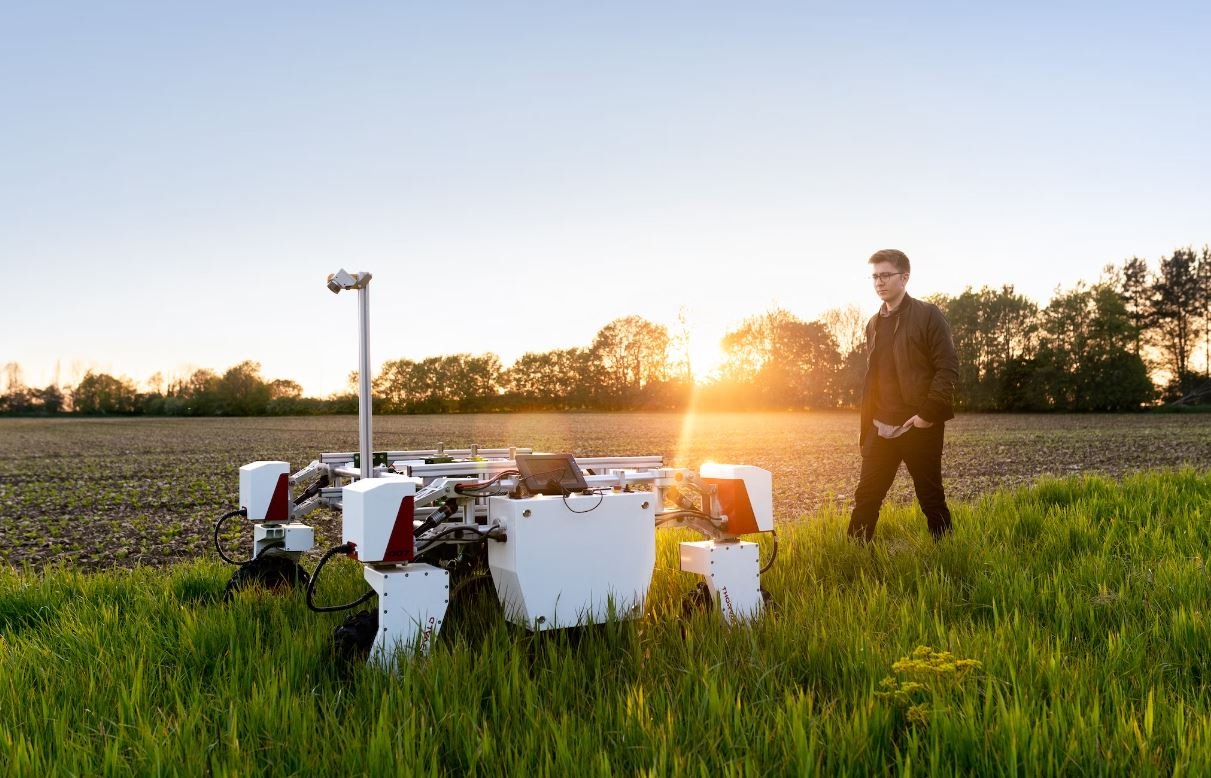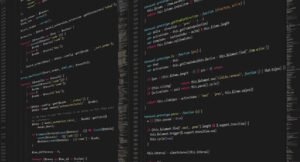AI Bubble Effect
Artificial Intelligence (AI) has revolutionized several industries, from healthcare to finance. As AI technology continues to advance, so does the hype surrounding it. However, there are concerns that this hype may be creating an AI bubble effect. In this article, we will explore what the AI bubble effect is, its potential implications, and how we can navigate through it.
Key Takeaways:
- The AI bubble effect refers to the exaggerated expectations and overvaluation of AI technologies.
- It can lead to misconceptions, overspending, and lack of real-world applications.
- Proper evaluation, realistic expectations, and a focus on practical applications can help navigate through the AI bubble effect.
Defining the AI Bubble Effect
The AI bubble effect occurs when the excitement surrounding AI technologies exceeds their current capabilities, creating unrealistic expectations. This phenomenon is similar to past technology bubbles, such as the dot-com bubble in the late 1990s. Investors pour large sums of money into AI companies without proper evaluation, leading to overvaluation. While AI has immense potential, inflated expectations can hinder its progression and adoption in real-world settings.
As technology advances, the line between science fiction and reality is becoming increasingly blurred.
Potential Implications
The AI bubble effect has several implications that need to be addressed:
- Misconceptions: Overhyped expectations can create misconceptions about the capabilities of AI, leading to disappointment and skepticism when these expectations are not met.
- Overspending: Companies may invest heavily in AI technologies without fully understanding their practical applications, potentially wasting resources.
- Lack of Real-world Applications: The focus on hype and speculation may divert attention from developing practical applications and solving real-world challenges.
While AI has the potential to transform industries, realistic and responsible approaches are necessary to ensure its success.
Navigating Through the AI Bubble Effect
Identifying and navigating through the AI bubble effect can be challenging. Here are some key strategies:
Evaluation and Realistic Expectations
Proper evaluation of AI technologies is crucial to avoid falling into the hype trap. Companies and investors should thoroughly analyze the capabilities, limitations, and potential risks associated with implementing AI solutions. Setting realistic expectations helps prevent disappointment and ensures a more responsible approach.
Focus on Practical Applications
Instead of solely chasing the hype, companies should focus on developing practical applications for AI. Identifying specific problems or challenges that AI can solve leads to more tangible results and a higher chance of success.
Collaboration and Knowledge Sharing
Collaboration between AI experts, researchers, and industry professionals is essential to share knowledge, validate claims, and debunk misconceptions. Open discussion and transparency help combat the AI bubble effect and foster responsible AI development.
Responsible investment and implementation of AI technologies are critical to prevent the bubble from bursting.
Tables with Interesting Data
| Year | Investment in AI Startups (in billions) |
|---|---|
| 2015 | 3.2 |
| 2016 | 6.5 |
| 2017 | 12.2 |
The investment in AI startups has shown significant growth over the past few years.
| Common AI Misconceptions |
|---|
| AI will replace human workers entirely. |
| AI has human-like consciousness. |
| AI will solve all problems effortlessly. |
Addressing common misconceptions is crucial in managing the AI bubble effect.
| Real-world AI Applications | Industry |
|---|---|
| Virtual assistants | Personal devices, customer support |
| Image recognition | Healthcare, security |
| Autonomous vehicles | Transportation, logistics |
The real-world applications of AI technology span various industries, bringing tangible benefits.
Navigating the Future of AI
As AI technology continues to evolve, it is essential to navigate through the AI bubble effect responsibly. Proper evaluation, realistic expectations, and a focus on practical applications are key to ensure the success and sustainable growth of AI. Collaboration and knowledge sharing will also play a vital role in dispelling misconceptions and fostering responsible AI development.

Common Misconceptions
Misconception 1: AI will replace human workers
One common misconception about AI is that it will eventually replace human workers in many industries. However, this is not entirely true. While AI has the potential to automate certain tasks and streamline processes, it is more likely to augment human capabilities rather than completely replace them.
- AI can assist with data analysis, allowing humans to make more informed decisions.
- AI can automate repetitive tasks, freeing up human workers’ time for more complex and creative work.
- AI can enhance human productivity by providing suggestions and insights based on large amounts of data.
Misconception 2: AI is infallible and unbiased
Another misconception is that AI systems are always infallible and unbiased. While AI can be highly accurate and efficient, it is still developed and trained by humans, which means it can inherit the biases and limitations of its creators.
- AI systems can perpetuate and amplify existing biases in data sets used for training.
- AI algorithms need careful monitoring and continuous evaluation to prevent bias and discrimination.
- AI technologies should be designed to be accountable and transparent to ensure ethical decision-making.
Misconception 3: AI is limited to robots and sci-fi scenarios
A common misconception around AI is that it is limited to robots and sci-fi scenarios. In reality, AI is much more diverse and encompasses a wide range of technologies and applications.
- AI is used in recommendation algorithms seen in online shopping platforms and streaming services.
- AI technology powers virtual assistants like Siri and Alexa, improving their natural language processing capabilities.
- AI is deployed in healthcare to aid in diagnostics, treatment planning, and drug discovery.
Misconception 4: AI can understand and mimic human emotions perfectly
Some people believe that AI can perfectly understand and mimic human emotions. However, despite significant advancements, AI still struggles to fully comprehend and replicate human emotions and social cues.
- AI can analyze facial expressions and voice patterns to make predictions, but it lacks the complexity of human emotional understanding.
- AI chatbots may appear empathetic, but their responses are usually based on pre-programmed rules rather than true emotional comprehension.
- Understanding and mimicking emotions requires context, which is challenging for AI systems to grasp accurately.
Misconception 5: AI will gain consciousness and take over the world
A popular misconception depicted in movies and literature is the fear that AI will gain consciousness and ultimately take over the world. However, this idea is more in the realm of science fiction than reality.
- AI systems lack the cognitive abilities and self-awareness required to develop consciousness.
- AI is designed with specific goals and capabilities, without the desire or ability to surpass them.
- Developing conscious AI would require a fundamental understanding of human consciousness, which is a complex and ongoing field of study.

Introduction:
The AI industry has experienced tremendous growth in recent years, with investments pouring into various sectors. However, this rapid expansion has led to concerns about a potential AI bubble effect. In this article, we explore ten illustrations, in the form of tables, that shed light on this phenomenon. Each table provides unique insights and data about the state of the AI industry, enabling a better understanding of the AI bubble effect.
1. AI Investment by Sector:
This table showcases the distribution of AI investments across different sectors, highlighting the areas with the highest levels of funding. It reveals that the healthcare sector has received the most significant investments, followed by finance and e-commerce.
2. AI Startups Founded:
Here, we present a table depicting the number of AI startups founded each year. From this data, we can observe the exponential rise in new AI ventures, indicating the growing interest and momentum within the industry.
3. AI Job Market:
This table provides insights into the AI job market, displaying the top AI job titles in demand and the corresponding number of open positions. The data reveals that AI Engineers and Data Scientists dominate the job market, emphasizing the need for skilled professionals.
4. AI Patent Filings:
In this table, we explore the number of AI-related patent filings over the years. The data highlights a significant surge in patent applications, reflecting an increased emphasis on innovation and intellectual property creation in the AI field.
5. Corporate AI Adoption Rates:
Here, we showcase the adoption rates of AI technologies across different industries. The table reveals that the technology and manufacturing sectors lead in embracing AI, while other areas still have room for growth.
6. AI Funding Sources:
This table provides a breakdown of the funding sources for AI projects, including government investments, venture capital, and corporate investments. It offers a comprehensive view of the financial backing behind the AI bubble.
7. AI Market Value:
This table presents the projected market value of the AI industry over the next five years. The data indicates a significant upward trend, with estimated values surpassing billions of dollars, highlighting the immense growth potential.
8. AI Startups Success Rate:
This table displays the success rate of AI startups, indicating the percentage that have secured subsequent funding or achieved significant milestones. The data reveals that while many AI startups face challenges, a notable proportion succeed and thrive.
9. AI Research Publications:
Here, we showcase the number of AI research publications published each year. This table demonstrates the continuous growth of AI research, emphasizing the industry’s commitment to knowledge advancement.
10. AI Regulation and Policies:
Finally, this table outlines the regulatory landscape surrounding AI technologies. It provides an overview of the countries and regions implementing AI regulations, highlighting the importance policymakers place on managing the AI bubble effect.
Conclusion:
The AI industry’s remarkable growth and investment influx have raised concerns about a possible AI bubble effect. Through the ten tables presented in this article, we have gained valuable insights into various aspects of the industry, including investments, employment, research, and regulations. While the data illustrates the bubble effect’s existence, it also underscores the promising potential and viability of the AI market. By understanding the nuances of the AI bubble effect, stakeholders can navigate the industry’s landscape more effectively, fostering sustainable growth and innovation.
Frequently Asked Questions
What is the AI bubble effect?
The AI bubble effect refers to the phenomenon in which the rapid development and increasing hype around artificial intelligence (AI) technologies may lead to unrealistic expectations and overvaluation of AI companies or projects. This can result in an inflated market, high investment levels, and a potential crash or correction in the AI industry.
How does the AI bubble effect occur?
The AI bubble effect can occur when there is a surge of interest and investment in AI technologies without a corresponding increase in the actual capabilities and maturity of AI systems. This may be fueled by media coverage, high-profile success stories, and the promise of AI revolutionizing various industries. However, if the hype outpaces the real-world progress, it can lead to a bubble effect.
What are the risks of the AI bubble effect?
The AI bubble effect poses several risks, including:
- Overvaluation of AI companies, leading to potential market crashes or corrections.
- Wasted investments in AI projects that fail to deliver on their promises.
- Lack of trust in AI technologies due to exaggerated expectations and disillusionment.
- Diverted resources and attention from other important areas of research and development.
How can the AI bubble effect be mitigated?
To mitigate the AI bubble effect, it is crucial to:
- Promote transparency and realistic expectations about the capabilities and limitations of AI technologies.
- Evaluate AI companies and projects based on their actual performance and value rather than hype.
- Encourage responsible AI development and deployment, ensuring ethical considerations are given due importance.
- Invest in education and awareness initiatives to help the public, investors, and policymakers understand AI better.
What lessons can we learn from previous technology bubbles?
Previous technology bubbles, such as the dot-com bubble, provide important lessons for addressing the AI bubble effect:
- Investing based solely on hype and short-term potential can be risky and unsustainable.
- Valuations should be grounded in real-world performance and long-term sustainability.
- Regulatory oversight should be implemented to prevent fraud and misuse of investor funds.
- Collaboration and knowledge sharing across stakeholders can help identify and address potential risks.
What are some signs of an AI bubble?
Some signs that an AI bubble may be forming include:
- Excessive venture capital investments in AI companies.
- Unrealistic promises and exaggerated claims about the capabilities of AI technologies.
- A sharp increase in AI-related media coverage and public interest.
- High valuations of AI companies without sufficient revenue or tangible market impact.
What potential benefits can AI bring despite the bubble effect?
Despite the risks associated with the AI bubble effect, AI technologies hold tremendous potential for various benefits:
- Improved efficiency and productivity in industries through automation and optimization.
- Enhanced decision-making capabilities based on data analysis and pattern recognition.
- Advancements in healthcare, transportation, and other sectors through innovative AI applications.
- Addressing complex societal challenges, such as climate change and poverty, through AI-driven solutions.
How can individuals and businesses navigate the AI bubble effect?
To navigate the AI bubble effect, individuals and businesses can:
- Conduct thorough research and due diligence before investing in AI companies or projects.
- Stay informed about the latest AI developments and separate hype from reality.
- Seek expert advice from professionals with experience in AI technology and investments.
- Focus on long-term value and long-lasting impacts when considering AI adoption or partnership opportunities.
Is the AI bubble effect just a temporary phase?
While the AI bubble effect may be influenced by short-term market dynamics, its long-term impact can vary. The sustainability and maturity of AI technologies, responsible governance, and cautious investment practices will play a crucial role in determining whether the bubble effect is a temporary phase or a more significant industry-wide phenomenon.
How can policymakers address the AI bubble effect?
Policymakers can address the AI bubble effect by:
- Developing regulations and oversight mechanisms to protect investors and prevent fraudulent AI projects.
- Supporting research and development initiatives that focus on long-term AI sustainability and societal benefits.
- Encouraging collaboration between government, academia, and industry to foster responsible AI innovation.
- Promoting transparency and information sharing to educate the public and investors about AI risks and potentials.





